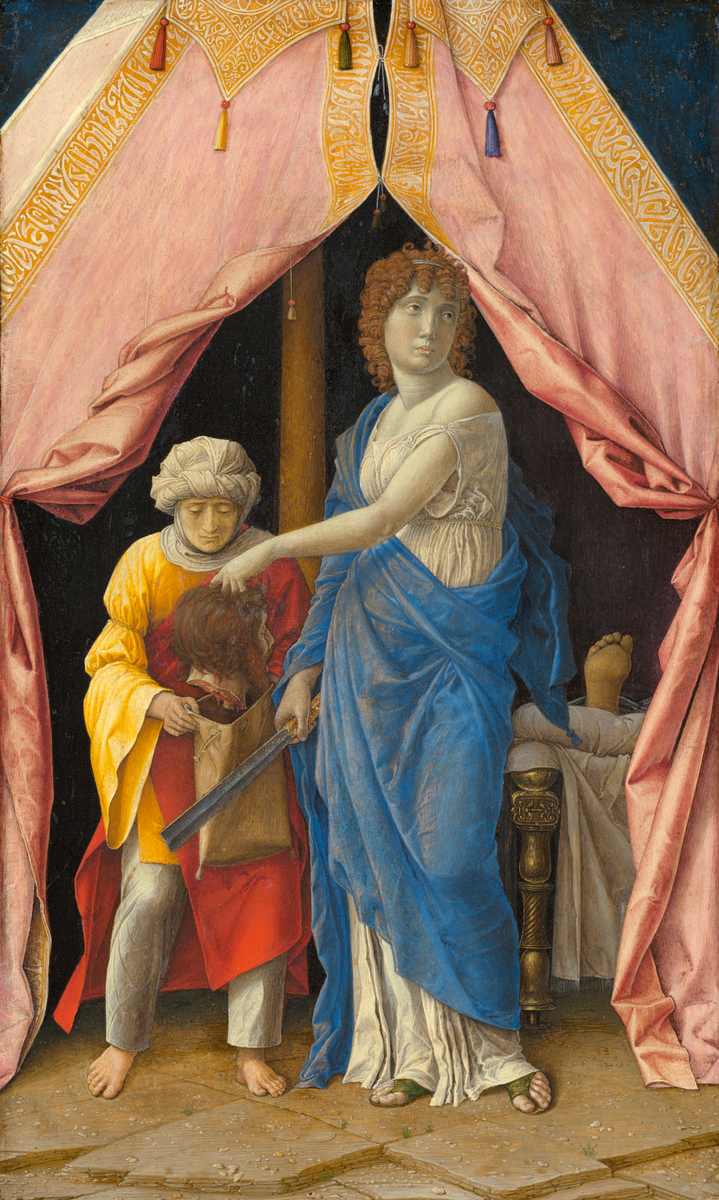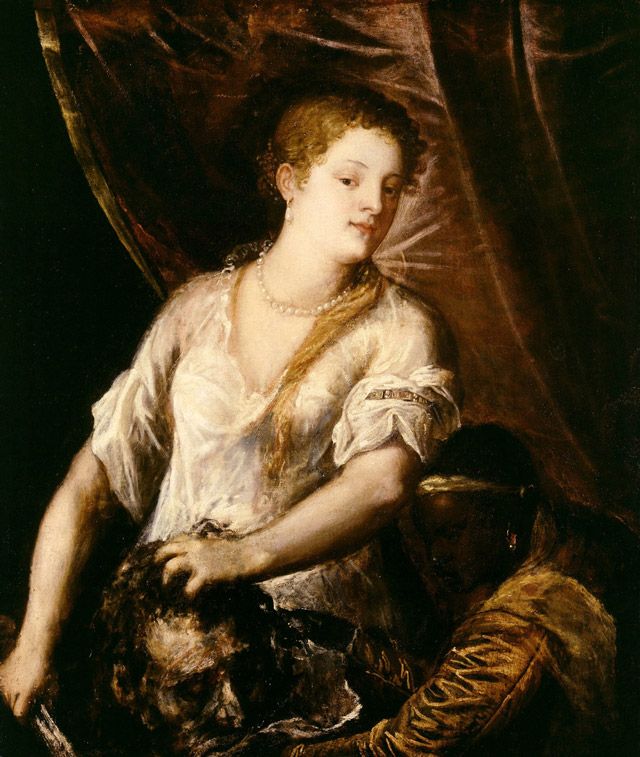
Judith with the Head of Holofernes, c. 1495-1500, Andrea Mantegna, Italian, c. 1431 – 1506, tempera on poplar panel, 12 1/8 x 7 3/4 in., National Gallery of Art, Washington DC, Widener Collection.

Judith with the Head of Holofernes, c. 1570, Titian, Italian, ca. 1488–1576, oil on canvas, 44 1/2 x 37 1/2 in., Detroit Institute of Arts, Detroit. 35.10. Photo: Lluís Ribes Mateu.
This work reinterprets a popular theme in Christian art: the biblical story of Judith and Holofernes. The night before the Assyrian general Holofernes’ conquest of Judith’s home city, the young woman beheads him while he sleeps, saving her people.
While many artists throughout history have portrayed this subject, Wiley’s version is most reminiscent of the poses seen in the paintings by Renaissance artists Andrea Mantegna and Titian, from 1495/1500 and 1570, respectively. Like the heroines in these works, Wiley’s Judith triumphantly holds the head of the would-be conqueror—now depicted as a white woman instead of a man, offering new avenues of interpretation.

